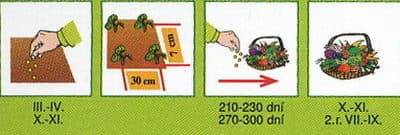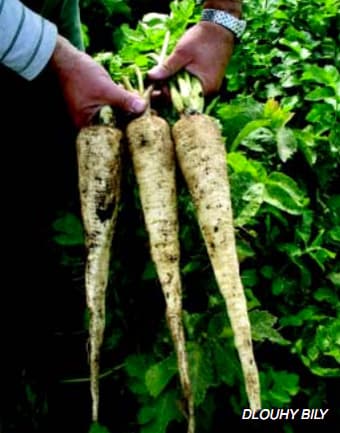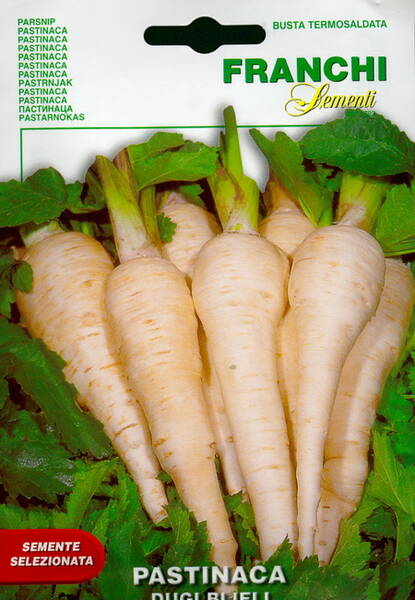High yielding parsnip with a long root and high level of resistance to diseases.
The plant has vigorous growth. Its white root is conical, 25-30 cm long, sharply pointed.
The variety is excellent for direct consumption as well as for processing, especially drying. Very good storability.
Growing period about 200 days from sowing (in Central Europe conditions).

Please note that…
· It has a taste reminiscent of carrots and parsley, inferior in spice to parsley.
Leaves are rough, so only good for flavoring soups and hot dishes
· The root is used in dried and fresh form as a seasoning for soups, borscht, fish dishes, pickled cucumbers, marinades.
Parsnip is well preserved until spring, easily tolerates slight frosts. It can overwinter in the ground under cover, and in early spring it can be used as needed.

* Parsnip is a very useful plant, how to grow it?
Parsnip is unpretentious, winter-hardy, cold-resistant, likes a sunny location, but also grows in partial shade. Prefers neutral soils, but tolerates even acidic ones. It develops better on fertile, organic-rich soils.
It can be sown in early spring along the edges of beds with other crops, along berry bushes and even along paths.
The seeds are large, so when sowing they are embedded in the soil to a depth of about 3-4 cm. Crops are immediately made sparse, sowing at a distance of 10 cm from seed to seed. There is no need to sow densely: the germination of seeds is excellent, but only in the first year.
If the seeds lie for a couple of years, they practically lose their germination. Root crops can overwinter directly in the beds without additional shelter, preserving all the vitamins and minerals until the beginning of summer. But at the beginning of summer, they quickly throw out a flower stalk and become inedible.

Parsnip. Bot. syn.: Pastinaca fleischmannii Hladnik.
Did you know that... the head and side roots of root crops are cut off, slightly cleaned, cutting out the damaged parts of the root crop.
Boil for 2 minutes in boiling water, and then roast in the oven along with the meat.
Root vegetables can be cut into strips or rings and fried in oil, or dipped in dough and then fried.
You can also mash boiled carrot parsnips with butter and nutmeg.
* When processing the parsnip root, it should not be allowed to oxidize, therefore it is cleaned and cut only with a stainless steel knife.
The peeled root, if not used immediately, is placed in water acidified with lemon juice or citric acid.
* Parsnip is used in the same dishes and in the same way as parsley and celery - mostly fresh (mainly root).
It doesn't dry well.
Its aroma is weaker, more delicate and more neutral than that of parsley and celery.












